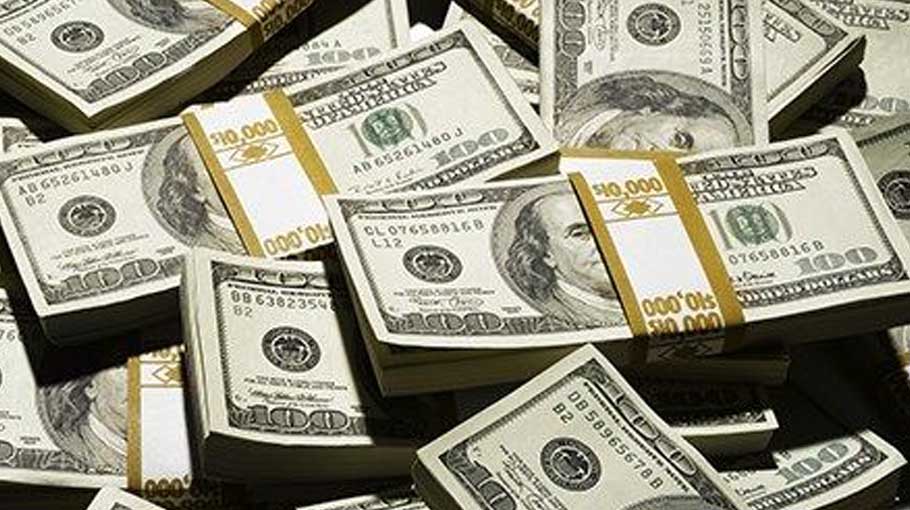BB sells dollars to banks to keep forex market stable

Bangladesh Bank sold US dollars directly to the commercial banks from the foreign exchange reserves to prevent the rise in the value of dollar against Taka.
As part of its move, the central bank sold $20 million on Monday to banks meeting import payments to stabilize the forex market, bankers said.
During the two and a half months, it sold $1.66 billion to the commercial banks to increase the supply of dollars in the forex market, they mentioned. Bangladesh Bank bought a record $8 billion in the last fiscal year 2020-21 to keep the market stable.
Following this, in the first month of the current fiscal year, $205 million dollars were bought.
However, dollar value is increasing by 2-5 paisa almost every day against Taka in the inter-bank. On Tuesday, the US dollar was quoted at Tk 85.75. It was sold at Tk 84.81 per dollar in the interbank currency market on August 2.
Dollar rate increased by 09 paisa in November, 17 paisa in October, 30 paisa in September and 39 paisa in August this year respectively.
The dollar was even sold for about Tk 91 in the money exchange market on Tuesday.
On Tuesday, the central bank sold dollars to banks at the rate of Tk 85.75.
Most of the state-owned banks, including Sonali, Janata and Agrani, have sold those dollars to customers at Tk 89, leaving Tk 3.25 paise more. And in the open market the price of that dollar has risen to Tk 91.
Dollar transactions between Bangladesh Bank and the commercial banks are called interbank transactions. The central bank sets these rates every day. Banks always sell dollars at two-and-a-half Taka more than this rate.
When the demand for dollars increases in the market, the banks sell dollars at three or four Tk more.
Experts said the demand for US dollars has increased in the inter-bank forex market as the country's import demand picked up recently and the remittance inflow has declined as well.
They said the central bank usually sells US dollars directly to commercial banks to meet higher demand for the greenback. It is a sign of the economic stability of the country, they added.
Md Serajul Islam, Bangladesh Bank executive director and spokesman, told Bangladesh Post, “Production activities are going on in the country during corona epidemic. The pressure to import industrial raw materials and capital equipment has increased.”
Besides, various previous import bills have to be paid, he said adding that, the demand for the dollar has increased and the market price has also increased. This is the normal rule, he mentioned.
“The central bank's job is to keep the money market stable, he said, adding that the dollar was bought when there was a supply of foreign exchange in the market. Now that supply has dwindled, the central bank is selling dollars in line with market demand,” Islam said.
Dr Atiur Rahman, former governor of Bangladesh Bank, told Bangladesh Post, Businesses are going on normally as the corona infections have declined rapidly.
As a result, the banks are opening more letters of credit (LCs) than the previous time, he said adding that, so the demand for dollars has increased.
Besides, commercial banks have been buying dollars from the central bank as the remittance inflow has dropped significantly, he mentioned.
Rahman said, “The central bank has provided good support to the forex market selling or buying dollars directly from the market, which has helped to make the forex market stable.”
Bangladesh Bank's intervention is playing a vital role in protecting the interest of the exporters as well as the remitters amid the Covid pandemic, he added.
Due to the increase in imports, the foreign exchange reserves of Bangladesh have come down below $45 billion.
After clearing the Asian Clearing Union (ACU) import bill of $1.13 billion on Thursday, reserves fell to $44.80 billion, the lowest in seven months.
According to the Bangladesh Bank, imports of various commodities worth $7 billion were made in September, which is the highest for one month at any time in the past.
In the first three months (July-September) of the current 2021-22 fiscal year, goods worth $18.72 billion were imported.
This figure is 47.56 percent more than the same period last year.
According to the central bank data, the remittance inflow reduced by 20 percent to stand at $7.05 billion in July-October in this fiscal over the same period of previous fiscal.
However, the country's export earnings witnessed a rapid growth and increased by $22.62 billion to stand at $15.75 billion during July-October period in the current fiscal against the same period of previous fiscal.




